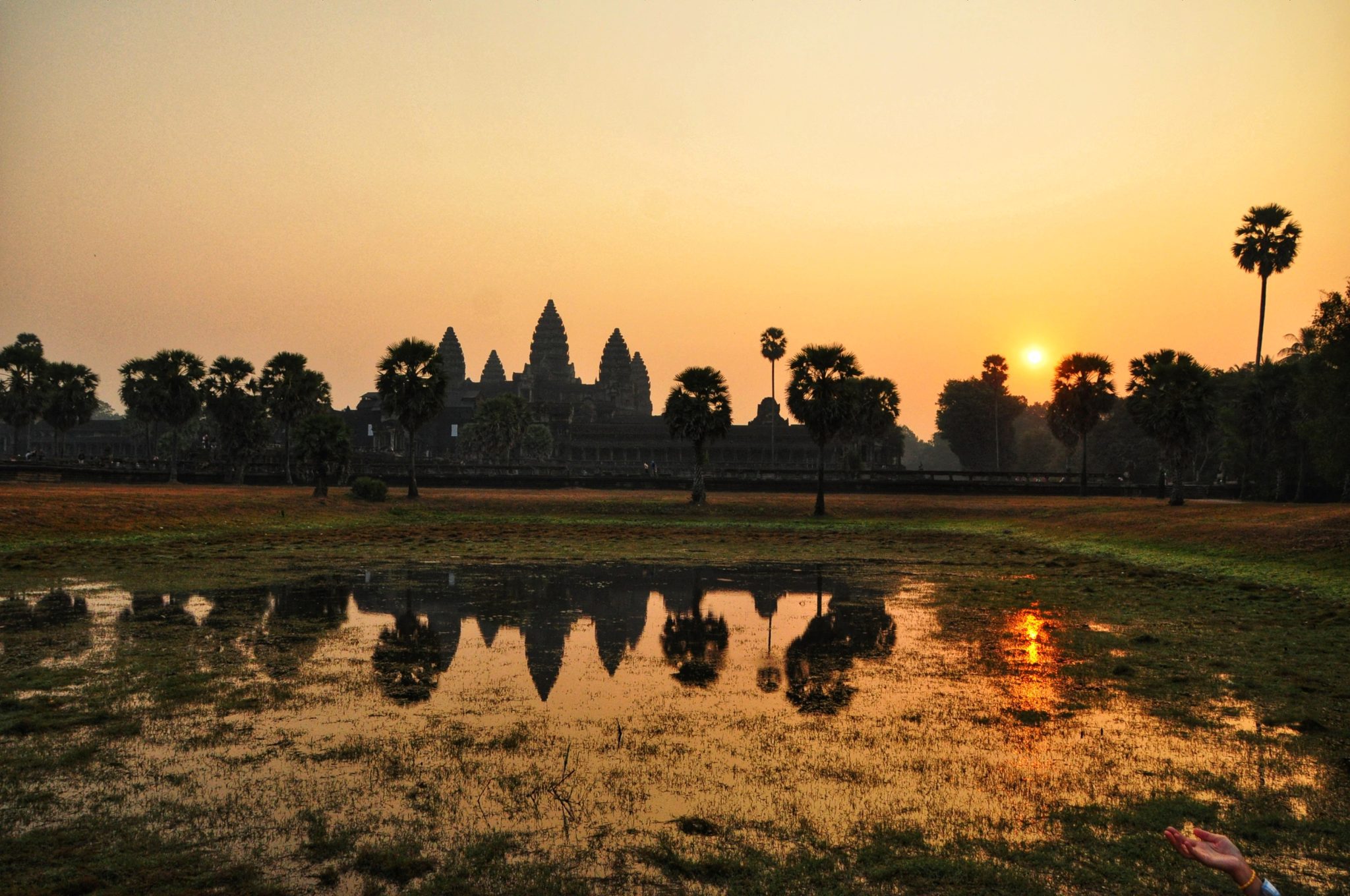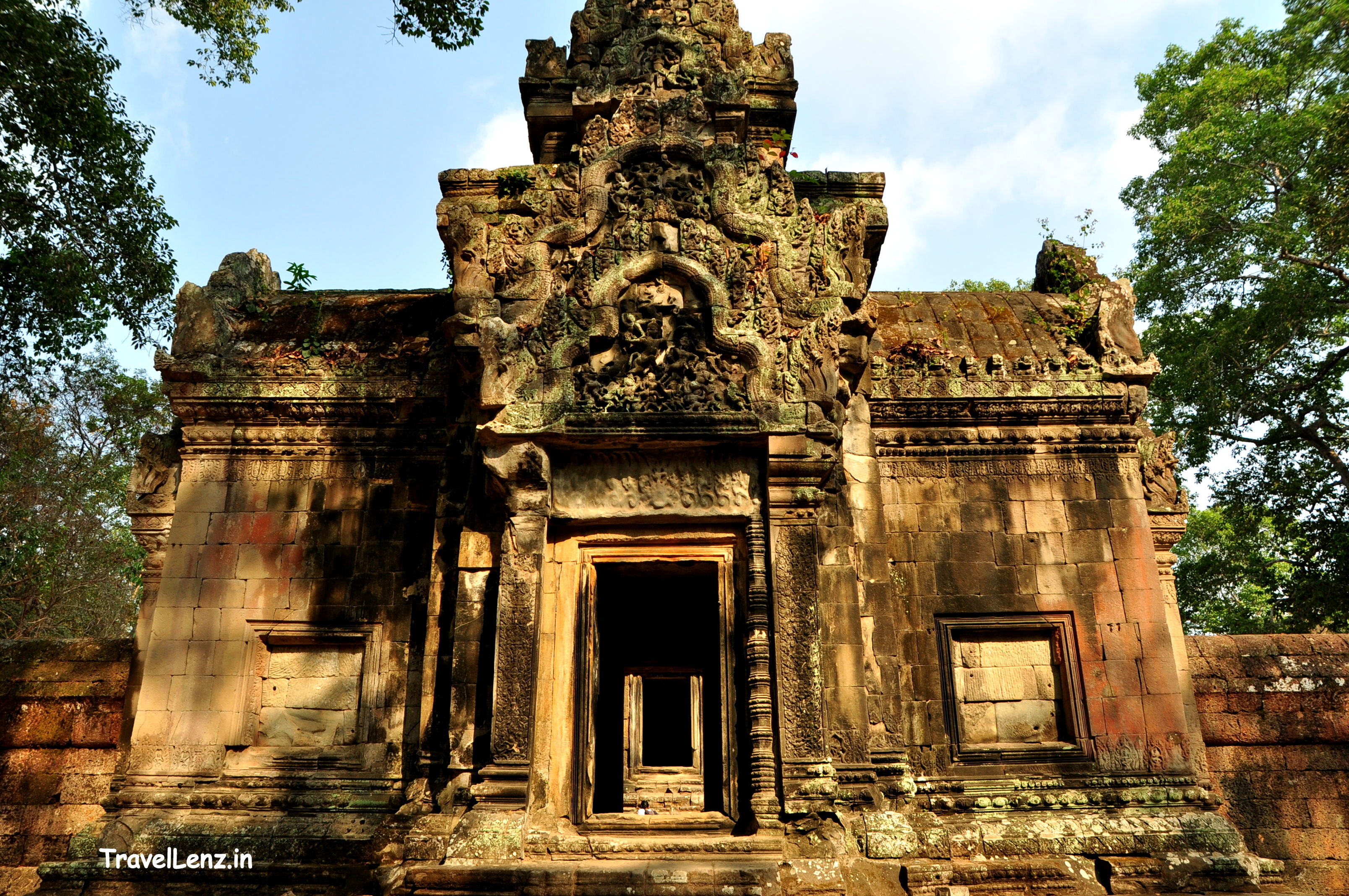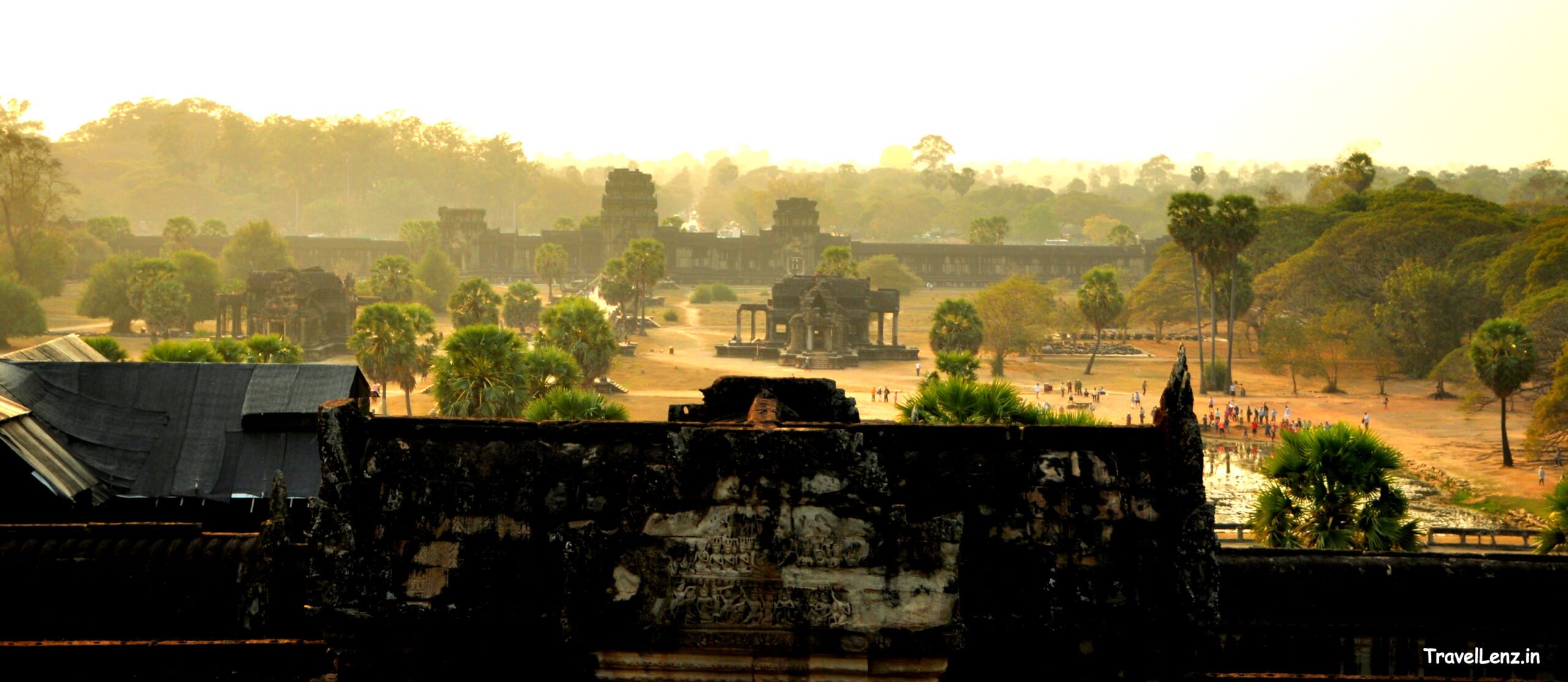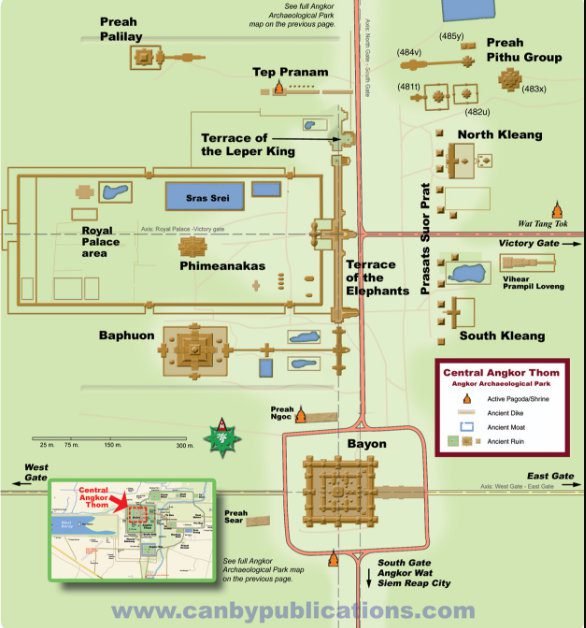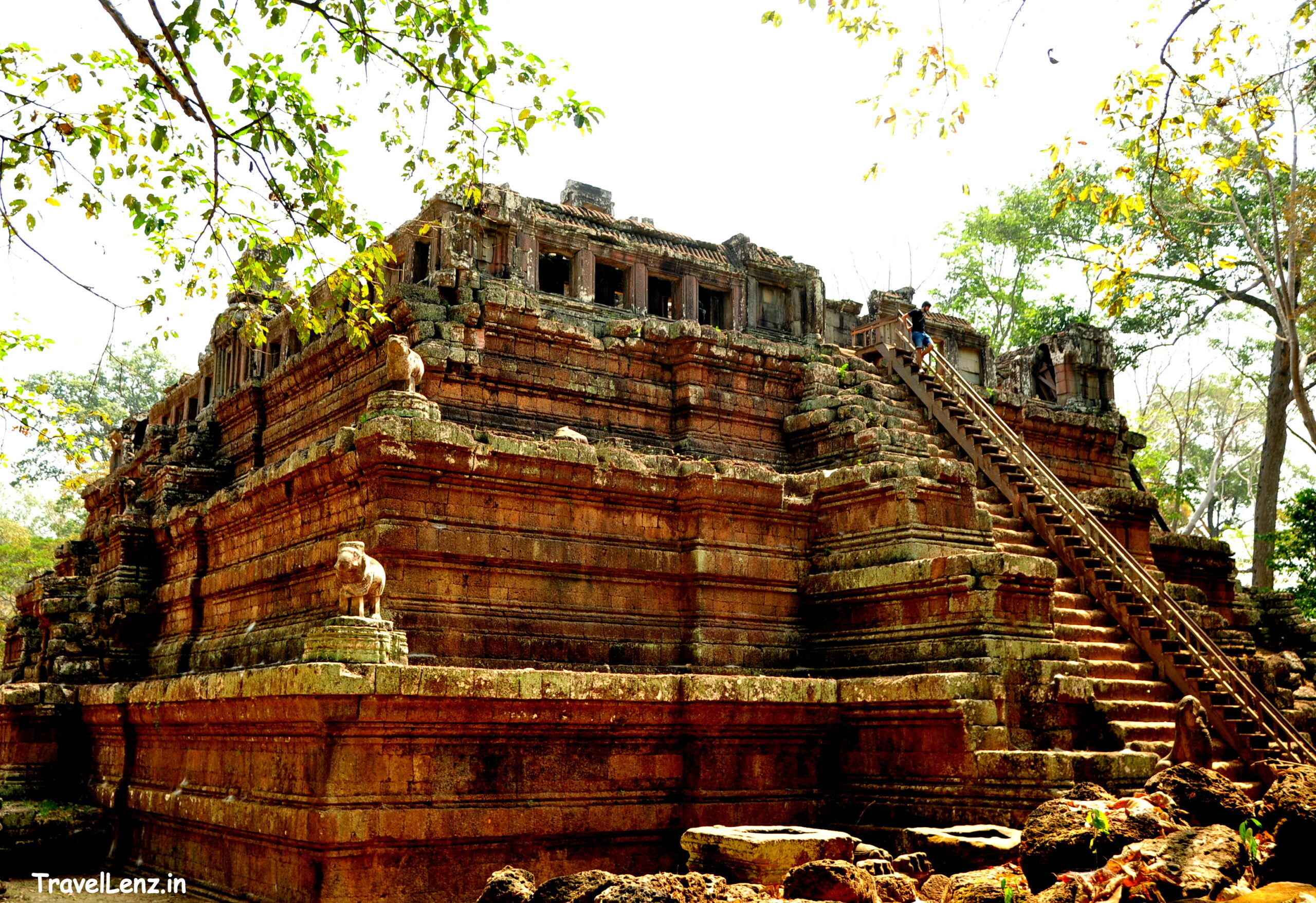Last Updated on May 20, 2021
A trip to Cambodia is incomplete without a visit to the world’s largest religious complex – Angkor Wat. And Angkor Wat is just one temple amongst a massive 400 sq km archaeological park full of ancient sacred ruins. So how do you make a plan to see everything around this vast site? Don’t worry, we’ve got you covered with our four-day itinerary for Angkor Wat!
From the 9th to 14th centuries, successive kings built more than 1000 temples in the Angkor region dedicated to the Hindu Gods, Siva and Vishnu, adorned with dancing apsaras, fanged Nagas and guardian lions.
There’s no way you can see everything in one trip. However, with some careful planning we have to put together an itinerary that will allow you to visit some of the park’s most iconic temples as well as head a little off the beaten track.
A trip to Cambodia is incomplete without a visit to the world’s largest religious complex – Angkor Wat. And Angkor Wat is just one temple amongst a massive 400 sq km archaeological park full of ancient sacred ruins. So how do you make a plan to see everything around this vast site? Don’t worry, we’ve got you covered with our four-day itinerary for Angkor Wat!
From the 9th to 14th centuries, successive kings built more than 1000 temples in the Angkor region dedicated to the Hindu Gods, Siva and Vishnu, adorned with dancing apsaras, fanged Nagas and guardian lions.
There’s no way you can see everything in one trip. However, with some careful planning we have to put together an itinerary that will allow you to visit some of the park’s most iconic temples as well as head a little off the beaten track.
Get your boarding passes ready….we are about to land in Siem Reap.
A trip to Cambodia is incomplete without a visit to the world’s largest religious complex – Angkor Wat. It is one of the most important archaeological sites in the world and a UNESCO World Heritage Site which helps to keep it protected.
Angkor Wat is just one temple amongst a massive 400 sq km archaeological park full of ancient sacred ruins.
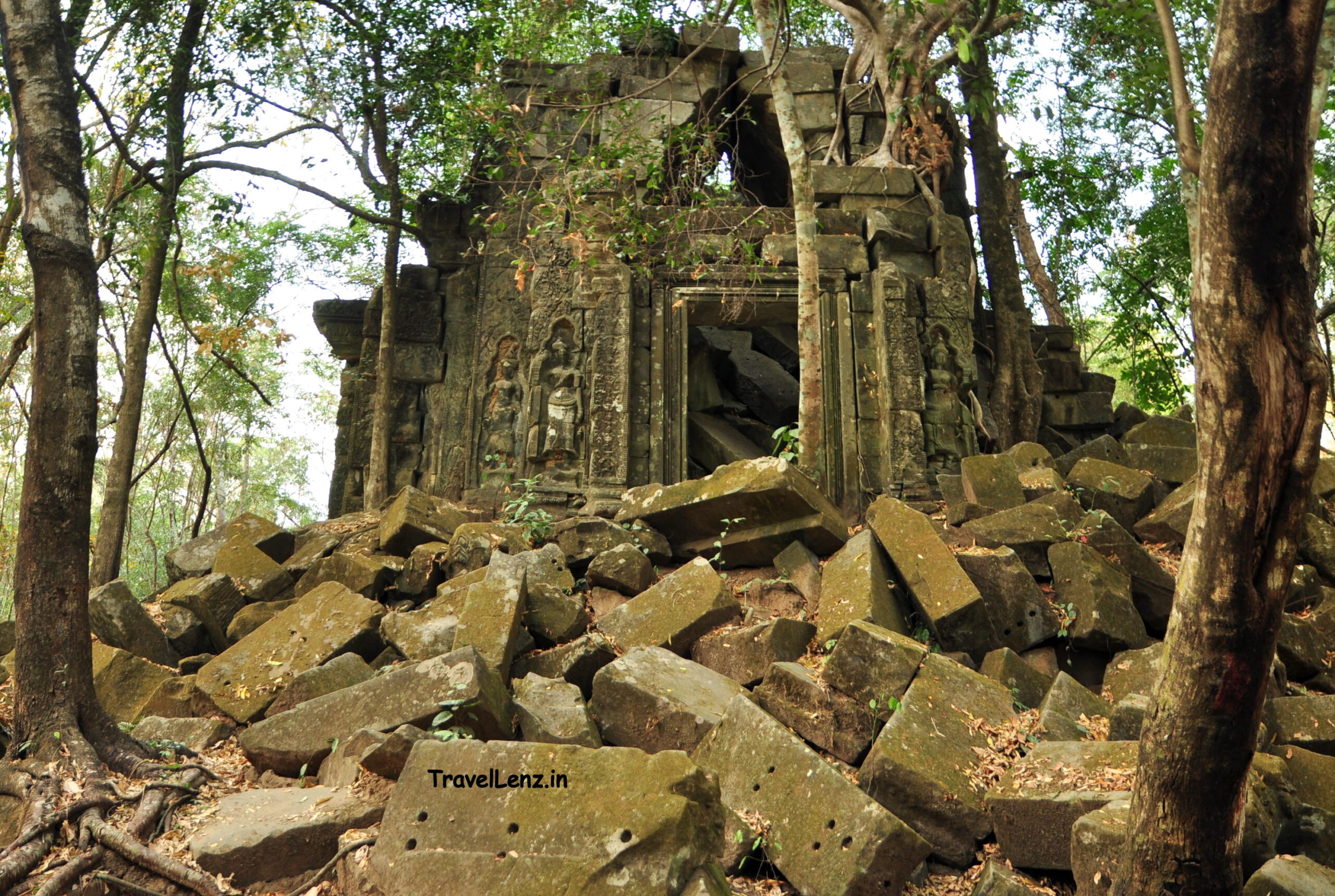 More than 1000 ancient ruins to conquer!! Tough, is it not? So how do you make a plan to see everything around this vast site? We’ve got you covered with our four-day itinerary for Angkor
More than 1000 ancient ruins to conquer!! Tough, is it not? So how do you make a plan to see everything around this vast site? We’ve got you covered with our four-day itinerary for Angkor
This complete guide will provide you with everything you need to know prior to visiting Angkor Wat including the best circuits to see the maximum number of temples, entrance fees, hours, the dress code, and how to get around.
From the 9th to 14th centuries, successive kings built more than 1000 temples in the Angkor region dedicated to the Hindu Gods, Siva and Vishnu, adorned with dancing apsaras, fanged Nagas and guardian lions.
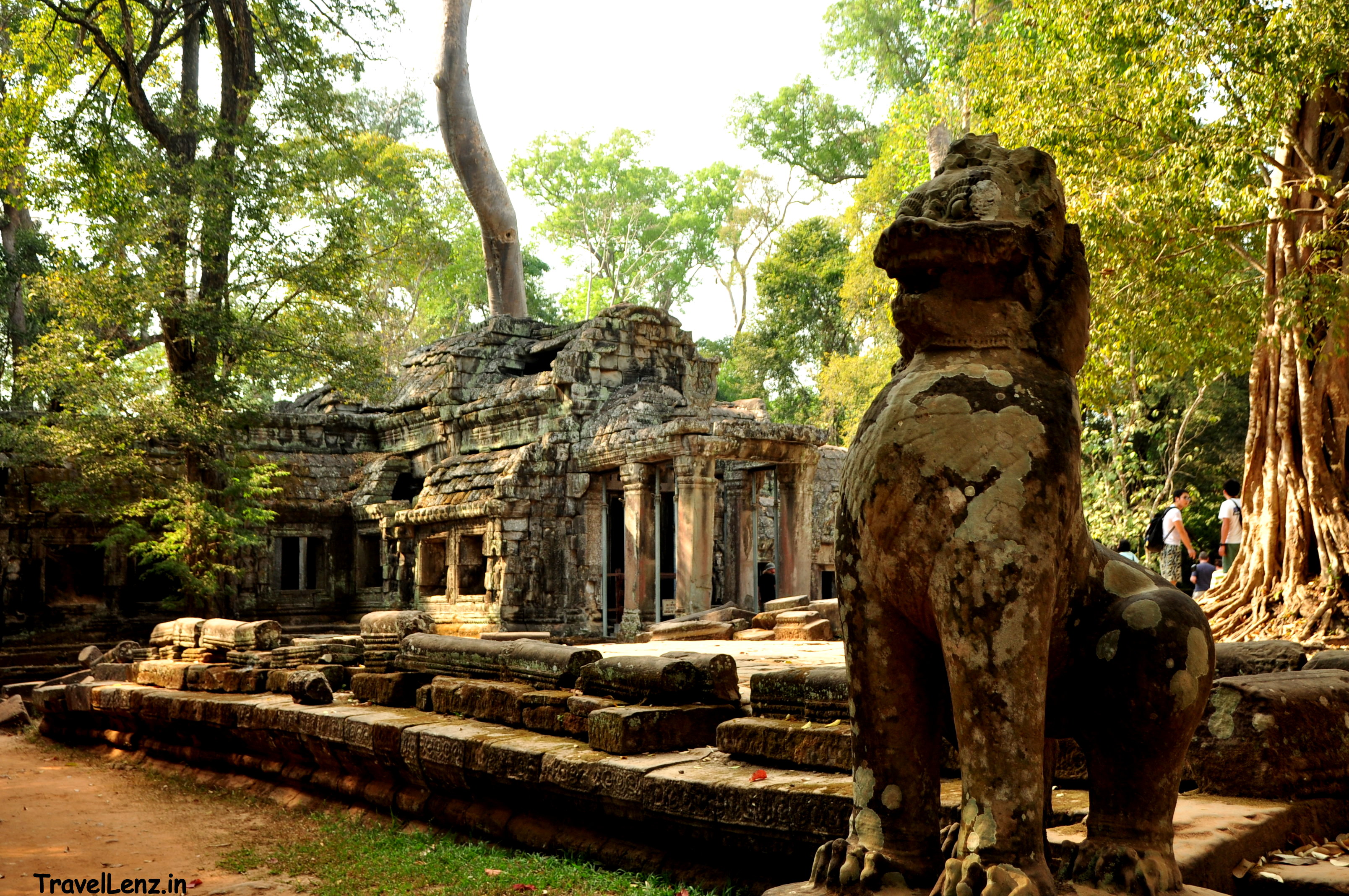 There’s no way you can see everything in one trip. However, with some careful planning, we have to put together an itinerary that will allow you to visit some of the park’s most iconic temples as well as head a little off the beaten track.
There’s no way you can see everything in one trip. However, with some careful planning, we have to put together an itinerary that will allow you to visit some of the park’s most iconic temples as well as head a little off the beaten track.
But first – you need an Angkor Pass
You need to buy an Angkor Pass before you visit Angkor Archaeological Park. This is because the ticket office is not located at the entrance or inside the park. The Angkor Pass can only be bought at the Angkor Ticket Office or Angkor Enterprise located 4 km away from Siem Reap town. The Angkor Ticket Office is open from 4.30 am to 5.30 pm every day. Tickets purchased elsewhere are not valid.
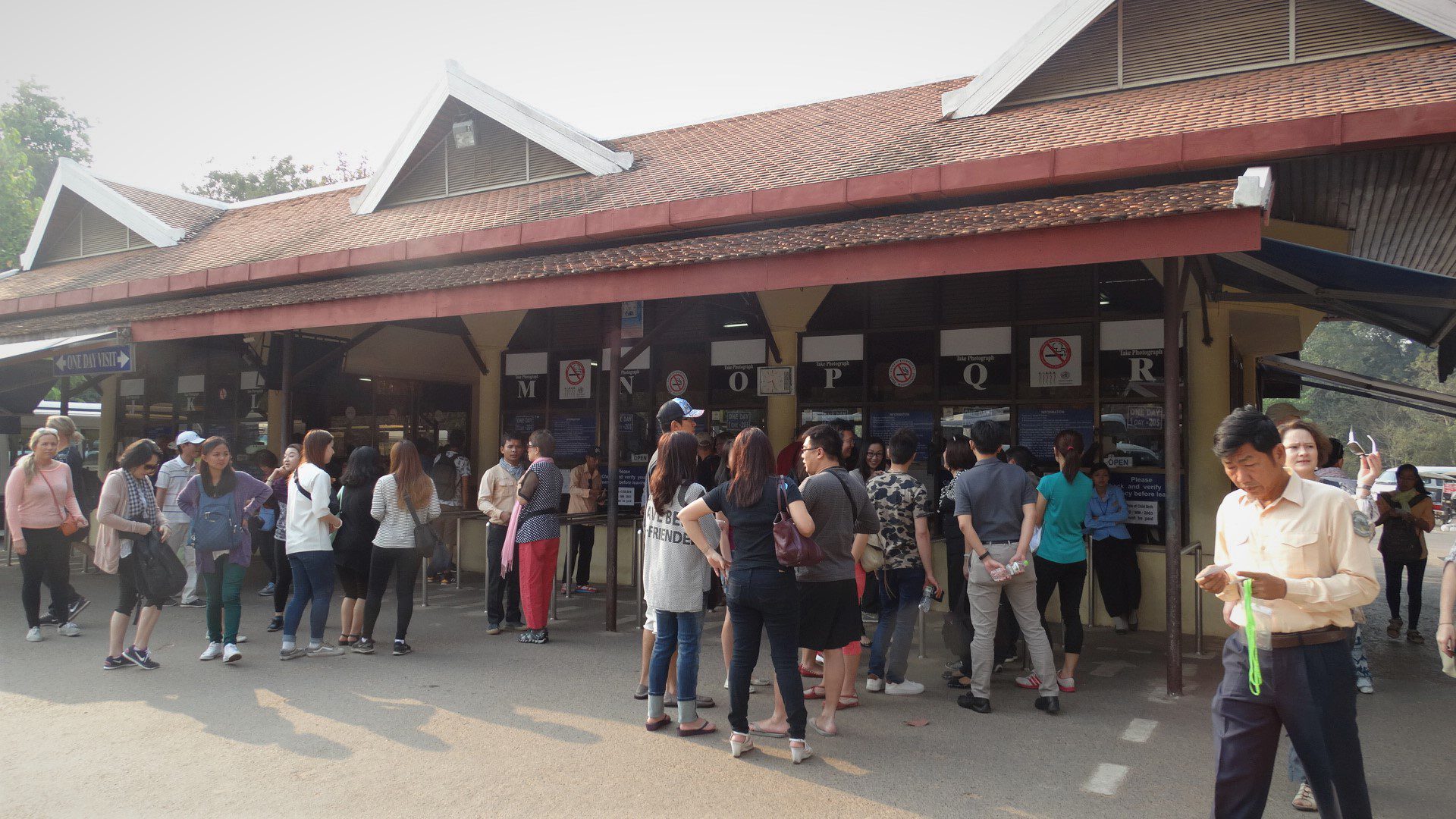 There are 3 types of passes available:
There are 3 types of passes available:
- 1-day ticket – $37 USD
- 3-day ticket (valid for 1 week) – $62 USD
- 7-day ticket (valid for 1 month) – $72 USD.
- For both of the 3-day and 7-day passes, it’s not necessary to plan your visits on consecutive days.
- Admission passes are not transferable. The pass owner’s name and photo are printed on the ticket.
- The entrance ticket can be paid in cash (US Dollars, Cambodian Riel, Thai Bath, Euro) or by credit card.
- Children under 12 are free but must show their passport.
- Tickets issued after 5:00 pm are valid for the next day.
- For temples like Koh Ker, Preah Vihear, Preah Khan of Kampong Svay, Banteay Chhmar and Phnom Kulen mountain you need to purchase a separate admission pass, which costs from US$ 5 to US$ 10, from the respective temple entrances.
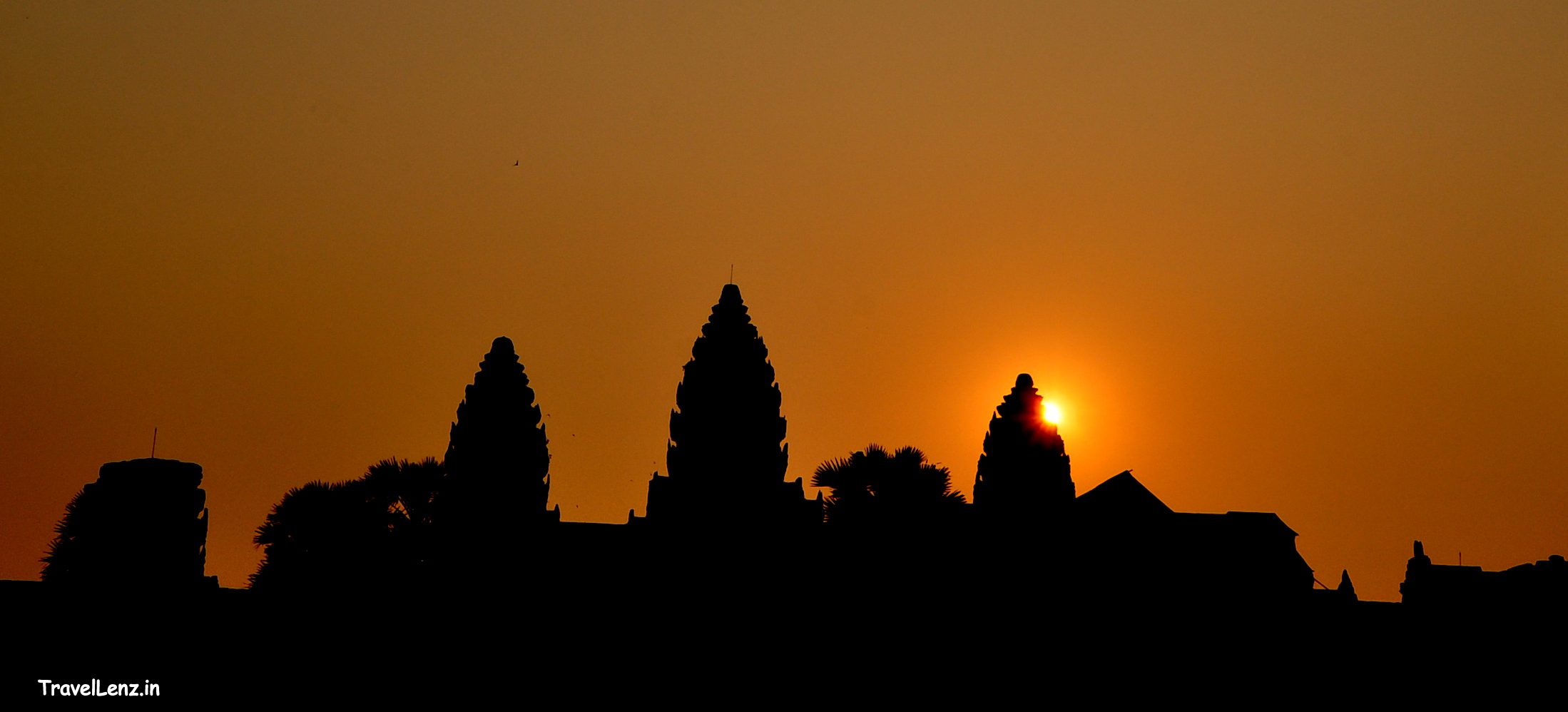 Tip: To avoid queues it’s best to buy your pass the day before you want to use it. If you buy it after 5 pm, you can even enter the park for a free sunset and it won’t count towards your three days.
Tip: To avoid queues it’s best to buy your pass the day before you want to use it. If you buy it after 5 pm, you can even enter the park for a free sunset and it won’t count towards your three days.
Should you purchase a 1, 3 or 7 day pass?
If you are on a tight schedule, you can see Angkor Wat in one day. But you are going to miss out on many of the sights.
The 3-day pass is the most suitable and that is what we opted for. You can use the pass on three non-consecutive days within one week. This allows you to explore beyond the massive Angkor Wat and the popular Ta Prohm and Bayon temples. The smaller Ta Som and Banteay Srei or the remote Beng Mealea aren’t any less marvellous and well worth a look.
However, if you are into ancient Khmer relics or you are in Cambodia for a couple of weeks and prefer to spread out your temple visits, a 7-day pass will work for you.
What are the Angkor Archaeological Park Hours
- Angkor Wat Temple and Srah Srang: 5:00am – 5:30pm (open for sunrise)
- Phnom Bakheng and Pre Rup Temples: 5:00 am – 7:00 pm (open for sunrise and sunset)
- All other temples: 7:30 am – 5:30 pm
But how do you get around in Angkor?
The Angkor Archaeological Park is massive – you won’t be able to visit solely on foot.
So how do you get around? You can either join a group tour, hire an official private guide, or be on your own.
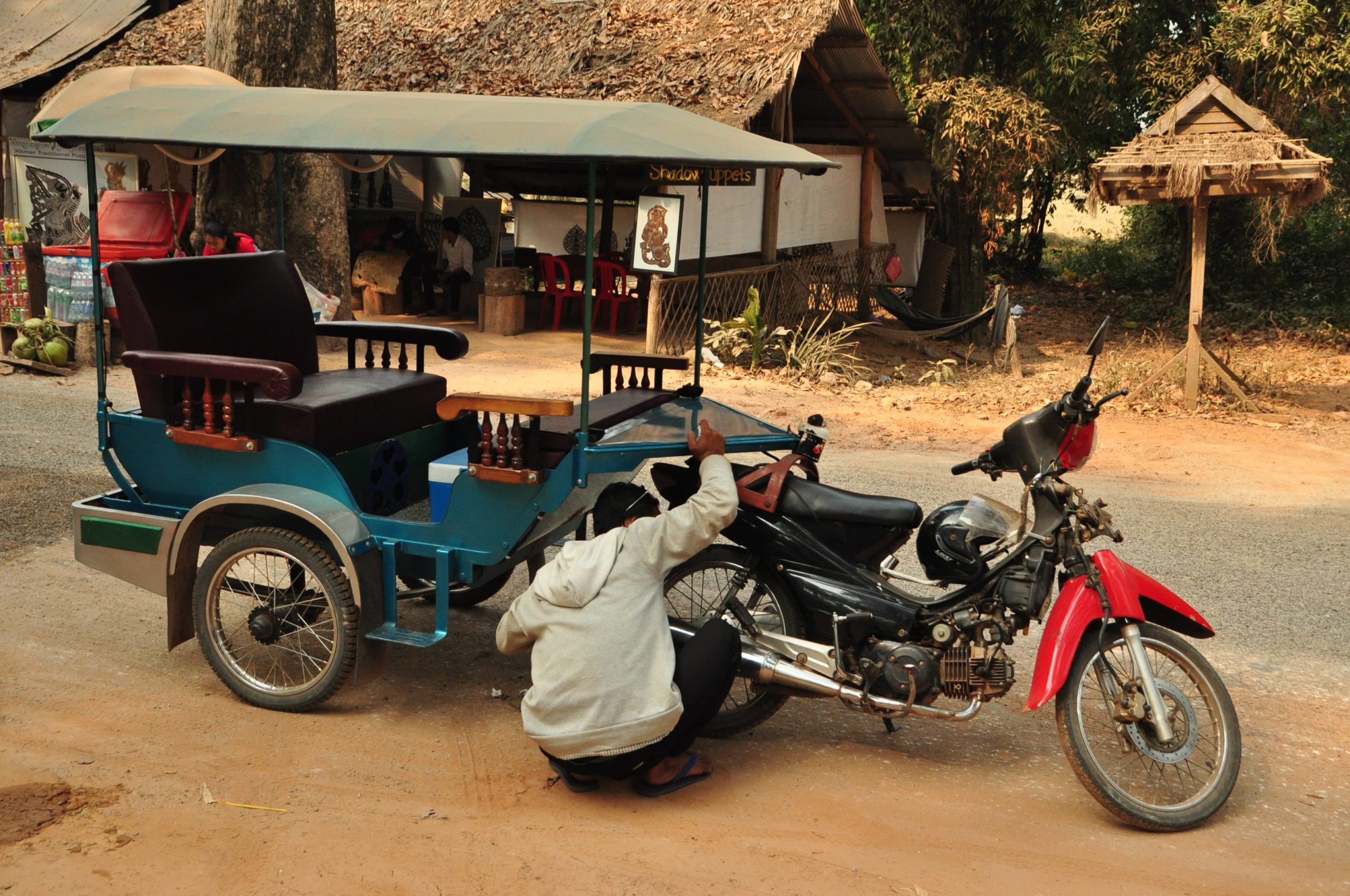 If you prefer to be on your own, you could ask a tuk-tuk driver to be at your disposal. The best way to go about this is by speaking to your hotel reception and asking if they can recommend an English speaking tuk-tuk driver. The going rate is around $15-20 per day.
If you prefer to be on your own, you could ask a tuk-tuk driver to be at your disposal. The best way to go about this is by speaking to your hotel reception and asking if they can recommend an English speaking tuk-tuk driver. The going rate is around $15-20 per day.
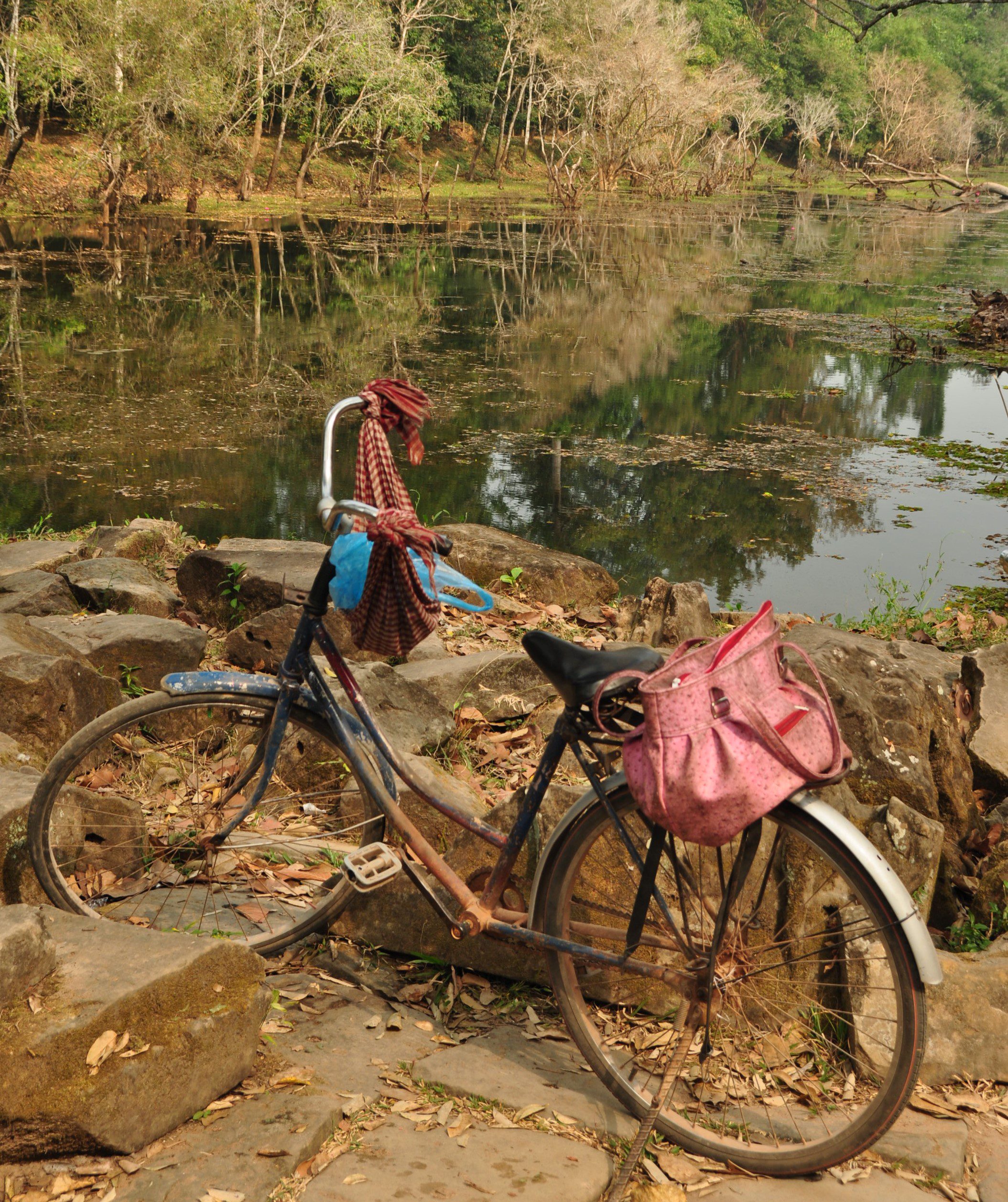 If you are up for a little adventure, you could even hire a bicycle and pedal around the ruins. There are many options for renting a bicycle in Siem Reap, starting from just $2 a day. You could also ask your hotel – they will have the means to get you a bike. Keep in mind that hours on the saddle, beating the sun and scorching temperatures could be tiring.
If you are up for a little adventure, you could even hire a bicycle and pedal around the ruins. There are many options for renting a bicycle in Siem Reap, starting from just $2 a day. You could also ask your hotel – they will have the means to get you a bike. Keep in mind that hours on the saddle, beating the sun and scorching temperatures could be tiring.
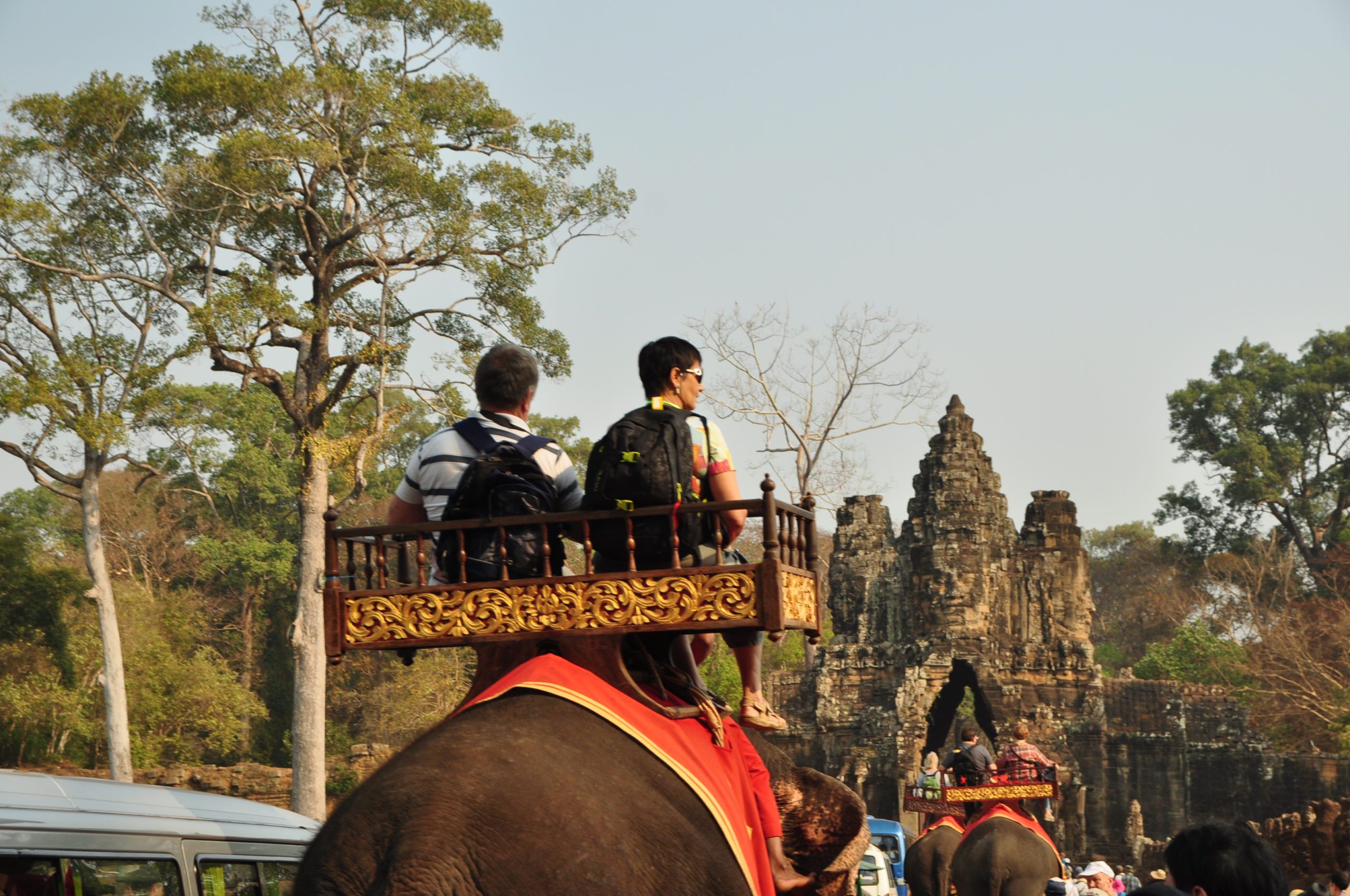 However, if you want a full explanation of the historical facts behind this stunning historical area, an official tour guide might be right for you.
However, if you want a full explanation of the historical facts behind this stunning historical area, an official tour guide might be right for you.
Angkor Wat dress code for men and women
Angkor Archaeological Park is a religious site and you have to respect the code of conduct. Dress modestly for your visit as Angkor is still a very significant and sacred place for Cambodian people.
- Cover up your shoulders and upper arms: this means no sleeveless tops, no tank tops, no straps, no spaghettis and not even T-shirts with short sleeves.
- Cover your knees: no above-knee shorts or short skirts.
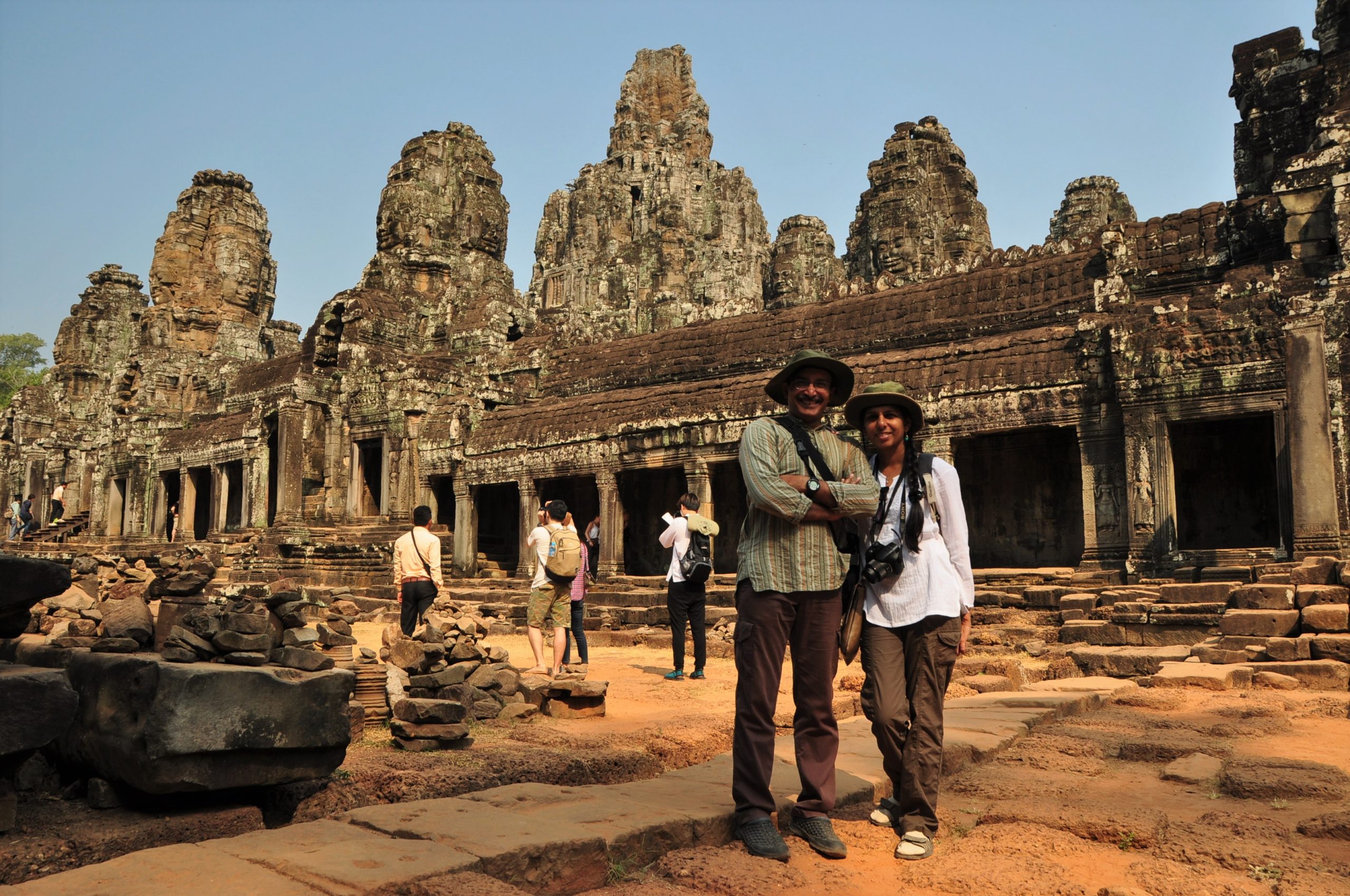 The enforcement is strict and your dress code will be checked when the guards check your ticket. Unlike other places in Southeast Asia, you cannot just use a shawl or scarf to cover yourself up. Sometimes people get turned away for not covering their lower legs too.
The enforcement is strict and your dress code will be checked when the guards check your ticket. Unlike other places in Southeast Asia, you cannot just use a shawl or scarf to cover yourself up. Sometimes people get turned away for not covering their lower legs too.
- Wear comfortable shoes or sturdy sandals as you’ll be doing a lot of walking and climbing up and down stone steps.
- Wear loose cotton or with breathable material.
- To beat the sun, wear a hat and sunglasses.
- Wear at least SPF50 sunscreen and replenish every few hours.
- Carry lots of water and stay hydrated.
Four-day itinerary for Angkor Wat
We had four full days planned out, besides the day we landed and the departure date. For anyone planning a visit to Angkor, here’s a look at how we structured our 4 days. You can adapt it as you wish.
Day 0 – Landing in Siem Reap and experiencing night-time Siem Reap
It was not a long flight from Bangkok to Siem Reap, but we were exhausted from excitement. We had to remind ourselves that we were actually in Cambodia.
We stepped out that first evening in Cambodia and almost every other night to explore the different alleyways on Pub Street and Old Market. To experience night-time Siem Reap, there is no other better place than Pub Street. Whether you’re going for a drink, having lunch or meeting new people, Pub Street is where it happens.
The oldest market in Siem Reap, Old Market is where locals shop for food and household items and you can find many vendors selling clothes, shoes, jewellery and a lot more. If you’re hungry head to the centre of the market where you can find authentic Cambodian dishes.
Hover over the image or click on it to find a description of what we did on that day. For a more detailed version, click on the highlighted links given on the hover box.
Landing in Siem Reap
We landed at the Siem Reap airport on an Angkor Air flight, checked into our hotel.
Exploring Pub Street and Old Market
There are so many things to do in Siem Reap and exploring Pub Street and Old Market is one of them.
Day 1 – The Small Circuit
The Small Circuit or the Small Circle covers the most popular and legendary monuments in the park. So if you have just one day, this is the way to go.
Most of the tours start with sunrise at Angkot Wat and continue clockwise. If you are in Angkor for only a day, wake up early to catch the sunrise at Angkor Wat.
We visited the sites in this order. Hover over the image or click on it to find a description of the heritage site. For a more detailed version of the individual sites, click on the highlighted links given on the hover box.
1. South Gate Tower
Make a stop at the South Gate Tower of Angkor Thom to admire the larger than life stone figures of Gods and Demons.
2. Bayon
Bayon stands out with its 200 odd mysterious smiling faces on 54 towers. Each face represents Avalokiteshwara.
3. Baphuon
Baphuon is three-tiered temple mountain. Walk around the temple to find a sleeping Buddha in a crumbling state
4. Phimeanakas
Phimeanakas, the celestial palace, is another temple-mountain. Legend says that a 9-headed snake spirit used to live here
5. The Terrace of the Elephants
Adorned with rows of elephants, the Terrace of the Elephants is a huge viewing gallery and served as the king’s grand audience hall.
6. The Terrace of the Leper King
The Terrace of the Leper King has incredible bas reliefs arranged across an outer wall and a hidden secret passageway
7. Suor Prat Towers
Suor Prat or the ‘Towers of the Rope Dancers’ are 12 laterite towers where acrobats used to perform during royal festivals.
8. Ta Prohm
Ta Prohm, the ‘Tomb Raider’ temple looks very much the way it must have appeared when the explorers first stumbled upon it.
9. Thommanon and Chau Say Tevoda Temples
The twin temples of Thommanon and Chau Say Tevoda are small but picturesque temples just outside the Angkor Thom. walls
10. Gate of the Dead – Angkor Thom Eastern Gate
The Gate of Death gets its name from the custom of the gate only being used when transporting a king to his funeral.
11. Angkor Wat and a Sunset
Angkor Wat – sunset at Cambodia’s famous UNESCO World Heritage Site and the largest religious monument in the world
Day 2 – Big Circle
The big circle or big circuit route includes the temples that are outside of the small circuit and on the outskirts of the complex. The temples below are listed in order of how we visited them.
1. Angkor Wat and a Sunrise
Wake up early to watch the sunrise over Angkor Wat.
2. Pre Rup
Pre Rup is a three-tiered laterite temple where funerals were conducted. It is a popular place for sunset viewing
3. Banteay Srei
Banteay Srei or Citadel of Women is known for its life-size sculptures and exquisite carvings done in red sandstone.
4. Praeh Dak Village
Make a stop at Preah Dak, a typical Cambodian village, to see how the locals make palm jaggery.
5. Banteay Samre
With tall windows, the Banteay Samre temple looks more like a fortress from outside.
6. East Mebon
East Mebon is located on East Baray, an artificial reservoir. You’ll find stone elephants along the platforms on two levels.
7. Ta Som
The major feature that sets it apart Ta Som is a strangler fig tree that grows atop the eastern Gopura.
8. Neak Pean
Neak Pean, an artificial island temple situated in the middle of the Northern Baray has a picturesque setting.
9. Phnom Bakheng
Phnom Bakheng is Angkor’s favourite sunset point where you get to watch the sun sink over ancient Khmer ruins
Day 3 – Roulous group and a few other temples from the small and big circuit
On the third day, we decided to visit a few temples that we had missed out from the small and big circuit. During the latter part of the day, we decided to visit Roluos, a village, known for a group of monuments that were built before Angkor.
The temples below are listed in order of how we visited them.
1. Baksei Chamkrong
A beautiful pyramid temple with a single tower, Baksei Chamkrong is very close to the South Gate of Angkor Thom.
2. Preah Khan
A large linear temple complex in a dense jungle setting, Preah Khan is located just outside Angkor Thom.
3. Ta Nei
One of the smaller Angkor temples, Ta Nei is dedicated to Buddha.
4. Banteay Kdei
Banteay Kdei ruins are a fascinating maze of structures that one served as a Buddhist temple.
5. Srah Sang
These are the Royal Baths, once a major bathing spot for every living thing, elephants aside, in the area.
6. Prasat Kravan
The Prasat Kravan, a Hindu temple consists of a line of five brick towers built closely together set atop a low platform.
7. Preah Ko
One of the oldest temples in Angkor, Preah Ko is dedicated to Lord Shiva and is named after his mount, the bull Nandi.
8. Bakong
One of the older mountain temples in Angkor, Bakong belongs to the Roluos group of temples.
9. Lolei
Lolei is one of the temples of the Roluos group and was constructed on an artificial island in the Indratataka Baray.
Day 4 – The hidden temples in Koh Ker and the jungle temple in Beng Mealea
Today we were ready to explore Angkor’s relatively further off temples – Koh Ker, the once-grand capital of the Khmer empire, and Beng Mealea, also known as the Jungle Temple.
1. Cambodia’s hidden temples at Koh Ker
There are around 100 temples found in the Koh Ker region that were built during its brief stint as a Khmer capital.
2. Beng Mealea
Beng Mealea temple was built in a similar architectural style and layout as that of Angkor Wat, only smaller.
Exploring Angkor is the highlight of any trip to Cambodia. In 4 days, we visited more than 40 ancient Khmer ruins including temples and other sites.
Have you ever been to the Angkor Archaeological Park? If so, let us know what we have missed?
Share with us in the comments, we would love to hear from you….


